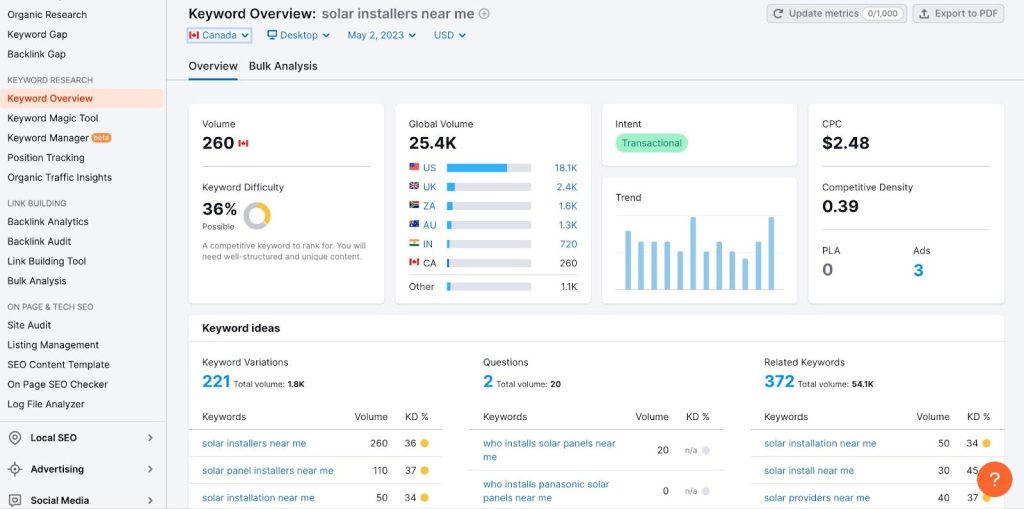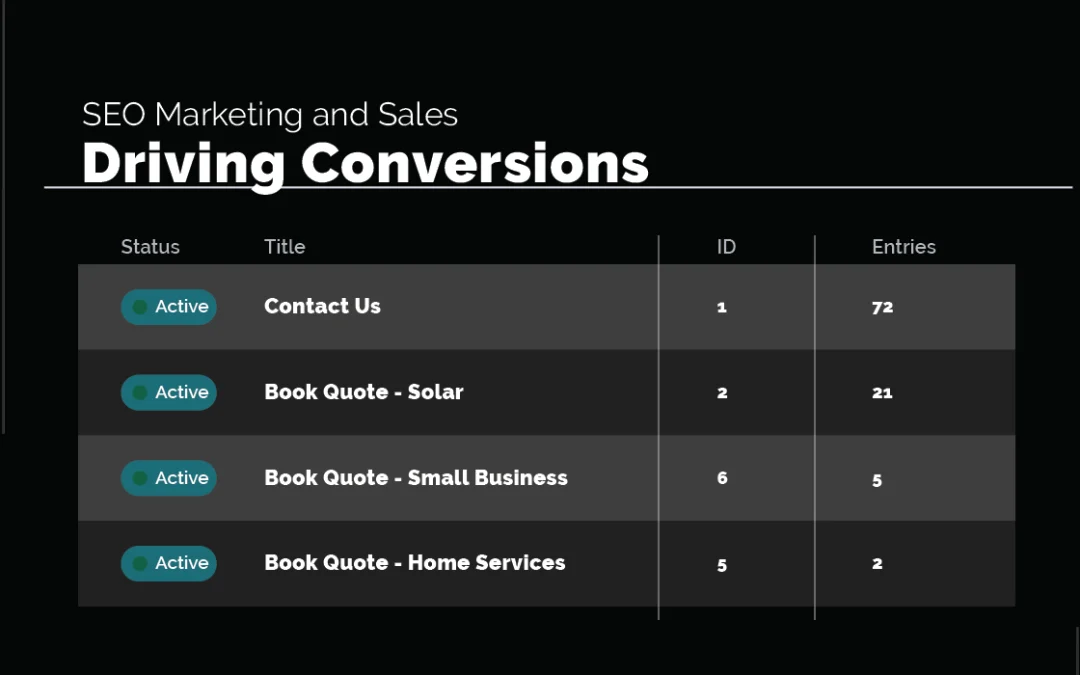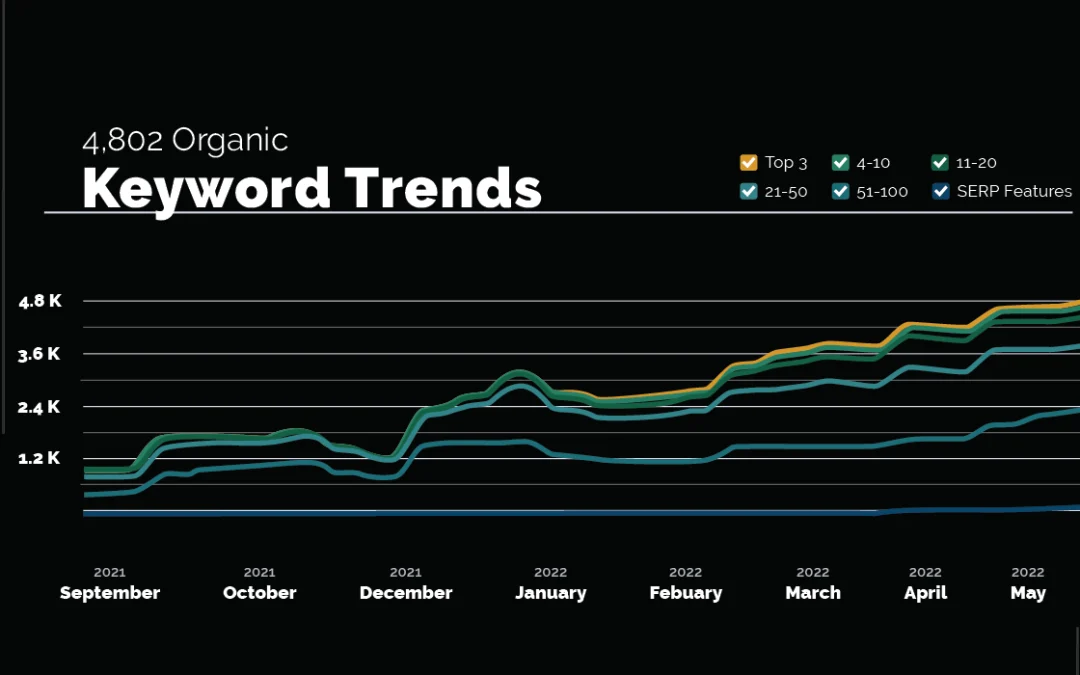With so many people looking for information about solar products online, your website needs to generate leads and convert them into customers—but what features are the most essential for achieving these goals?
As a solar installer, designing a website with the right elements makes you highly visible to potential customers in the regions you serve, gives you an effective brand-building platform, and more. Here’s a list of the absolute must-haves for your website in 2023.
Responsive & User Friendly Web Design

Mobile-First Design
Adopting a mobile-first design for your website is crucial for reaching top-of-funnel customers who are casually browsing for info about solar installations from their devices. Prioritizing your site’s mobile functionality significantly improves the user experience and makes your digital assets more effective at engaging visitors. This helps turn more of your site traffic into qualified leads by making it easier to connect them with your content.
Clear & Simple Layouts
There are a lot of widespread misconceptions about solar tech—including the assumption that it’s difficult and complicated. That’s why it’s especially important to make your website an environment where people can find information easily.
Clear navigation and well-structured content make it simple for users to understand the services you offer. A clean layout also makes your website look more professional and trustworthy, which creates the credibility you need to successfully convert leads into customers.
See Also: Do’s & Don’ts for a Strong User Experience on Solar Company Websites
Visual Content & Multimedia
High-quality images, videos, and graphics make your website more engaging and informative, helping potential customers visualize the benefits of installing solar panels. Videos, for example, can be used to demonstrate the installation process, showcase customer testimonials, or provide a virtual tour of your facilities. The right visuals can make it easier to communicate your brand message, convey your expertise, and build trust with potential customers.
SEO Best Practices for Solar Installers

Keyword Research
Careful keyword research helps your website rank higher on search engine results pages (SERPs). By using tools like Semrush (pictured above) to identify relevant keywords and phrases that your potential customers use when searching for solar installation services, you can naturally include them in your content, which improves your website’s visibility and drives more organic traffic.
Meta Tags & Header Tags
Optimizing your website’s meta tags and header tags is essential for both search engine rankings and user experience. Meta tags like titles and descriptions provide search engines with information about your web pages and help users understand what your page is about before clicking on it.
Header tags, on the other hand, structure your content and make it easily digestible for readers. They also help Google “read” your content and understand its relevance, which can significantly improve the way it ranks.
Image Optimization
Compressing and properly formatting images can reduce page load times, which is essential for retaining users and improving your search engine rankings. Adding relevant alt text and captions to your images also helps search engines understand the context of your visuals, further improving your website’s SEO performance.
FAQ Sections for Improved Search Visibility
Including an FAQ section on your website not only addresses common questions and concerns of potential customers but also improves your search visibility. By providing clear and concise answers to frequently asked questions, you can target long-tail keywords and voice search queries. This helps search engines recognize your website as a valuable resource, leading to higher rankings and more organic traffic from users looking for solar installation services.
Schema Markup for Rich Snippets
Rich snippets provide users with more detailed information about your web pages (such as ratings, prices, or availability). By using schema markup, you increase the likelihood of users clicking on your search result, leading to higher click-through rates and better user engagement.
Compelling Educational Content
Educational Blog Posts & Articles
Creating educational blog posts and articles showcases your expertise and provides valuable information to potential customers. By addressing common questions, debunking myths, and discussing industry trends, you can establish yourself as a trusted resource and build your brand effectively over time.
See Also: Why Providing Value is Better Than Direct Selling
Social Proof
Incorporating social proof like client testimonials and case studies on your website helps build credibility with potential customers. By showcasing the positive experiences and successes of your previous clients, you can demonstrate the value of your solar installation services and give prospects the confidence to choose you over competitors.
See Also: 6 Ways to Get More Google Business Profile Reviews
In-Depth Product & Service Descriptions
Accurate and detailed descriptions of your products and services help potential customers understand the solutions you offer and how they can benefit from them. Including visuals and technical specifications makes users feel more informed, which guides them towards making a decision about what you offer.
Industry News & Updates
Sharing industry news and updates on your website keeps your audience informed about new solar advancements and demonstrates your commitment to staying on the cutting edge. Since the solar industry is growing rapidly, this is an especially important way to maintain your authority in the space and keep building your brand.
Regularly updating your website with relevant news also signals to search engines that your site is a valuable and up-to-date resource. This improves your SEO performance and increases your chances of attracting potential customers.
Region-Specific Content
Content that targets users in your geographical area boosts the quality of your leads by ensuring that they will be people who can actually use your services. Creating region-specific content also helps you address local solar installation requirements, regulations, and incentives—providing additional value to your customers.
Strong Calls to Action (CTAs)
Strong Calls to Action (CTAs) guide potential customers towards taking actions like requesting a quote, scheduling a consultation, or downloading an e-book that explains how your installation process works. Compelling CTAs are short and sweet—but they make it clear what you want your visitors to do. Examples might include:
- “Get a Free Quote”
- “Schedule a Consultation”
- “Download Our Solar Savings Guide”
CTAs should also be strategically placed throughout your website’s content hierarchy—like in the header, on product and service pages, and within blog posts. Incorporating strong and clear CTAs on your website drives more inquiries, ultimately boosting your sales and revenue.

Elements for Lead Generation & Conversion Optimization
- Online quote and consultation forms: These streamline lead capture, providing an easy way for potential customers to express interest in your services.
- Live chat and chatbots for customer support: Offer instant assistance, addressing customer queries and concerns in real-time, improving user experience and increasing conversion likelihood.
- Trust indicators (certifications, awards, etc.): Establish credibility and authority, making potential customers feel confident about choosing your solar installation services.
- Exit-intent popups and lead magnets: Capture visitor information before they leave your website, offering valuable resources and incentives to stay engaged and potentially convert into customers.
Recommended Tracking Tools to Measure Your Site’s Performance
- Google Analytics: This comprehensive web analytics tool helps you monitor website traffic, user behavior, and conversions, providing valuable insights for optimizing website performance and driving sales.
- Google Search Console: An essential tool for monitoring your website’s search engine visibility, Google Search Console helps you identify and resolve technical SEO issues, tracking keywords, and analyzing backlinks.
- Hotjar: Hotjar offers in-depth understanding of user behavior on your website through heatmaps, session recordings, and surveys, which helps you identify areas of improvement and optimize your site content accordingly.
- Unbounce: Primarily a landing page builder, Unbounce also provides A/B testing and conversion rate optimization features, which makes it easier to create high-converting pages.
Optimizing Your Website Is an Ongoing Process
Building a high-traffic website for your solar installation business isn’t rocket science—but it does involve a lot of different elements, and it requires a certain amount of ongoing work to maintain and update your site properly.
Incorporate the elements and use the tools listed above to improve your site’s performance—or, for professional help building and maintaining a site that consistently generates high-quality leads, contact the Monochrome Marketing team. We’ll be happy to consult with you on the best ways to create an online presence that gets your message out to the right people and inspires them to embrace your solutions.








